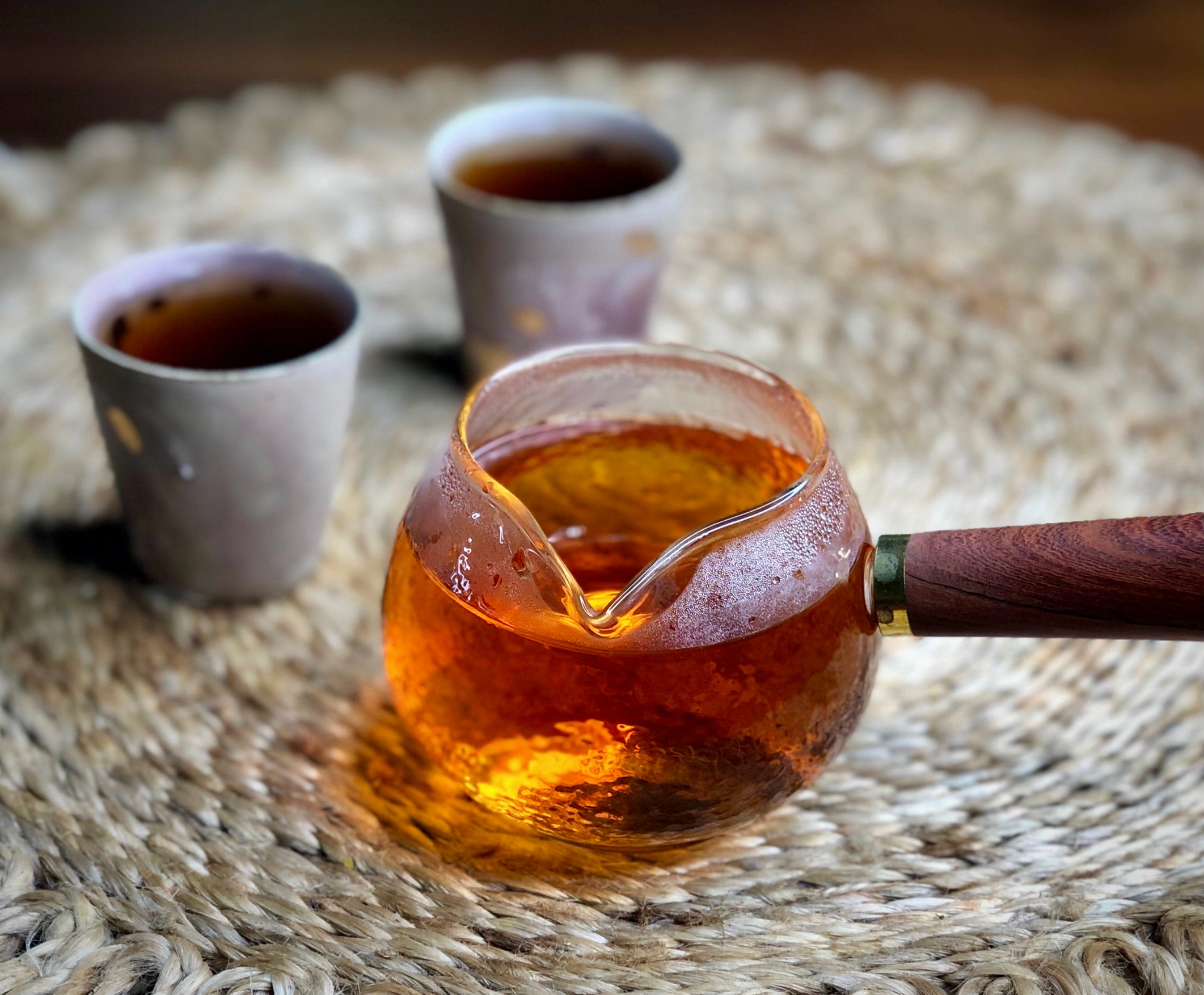After reading one of my recent posts, “Learning how to identify gushu & make maocha”, Lew Perin (of the invaluable Chinese tea lexicon Babelcarp) asked me how the processing of Puer differs from Oolong, and if the kill-green or “sha qing” process for Puer, completely stopped enzymatic activity, or just slowed it down?
Lew's question got me thinking - because puer continues to oxidise after wok-frying, perhaps sha qing for Puer is carried out to a lesser degree than for other teas? I set out to do some investigating. Chemistry was not my best subject in school, and I am certainly not an expert on the biochemical reactions that take place inside the tea leaf during processing. But I was surprised to find that most tea firers also can't describe exactly what goes on inside the leaf! Just like you don’t need to understand DNA & cell division to make a baby, I guess you don’t need to understand the details of biochemistry to make good tea. But if there are any scientists reading this article, please do contribute your thoughts & corrections.
Above: traditional puer shaqing method
The consensus opinion of the tea experts I asked, is that sha qing is slightly different for each kind of tea, as the temperature and time in the wok has to be adjusted according to the size and thickness of the leaves. For example, oolong leaves are smaller and thinner than Puer, so shaqing is done at a lower temperature and with a smaller load of leaves.
But the purpose of sha qing for all teas is the same – frying at high temperature arrests enzyme activity causing oxidation. But regardless of the kind of tea, it is impossible to fully stop oxidation. Sha qing cannot “fix” or preserve the leaf for all eternity, but it does for all intents & purposes pause the chemical reactions within the leaf. This gives the tea maker time to apply additional steps that shape the final flavour & aroma of the tea. For example, the following step of “rou nian” or rolling the leaves involves crushing the leaf cells, mixing the remaining juices, and starting a new set of chemical reactions.
Above: traditional puer rounian method
The key point is that sha qing for Puer is not deliberately left incomplete or somehow less “finished” than for other types of tea. In fact, sha qing for all teas is a delicate balancing act, between not burning the leaves, and not under frying them. Under fried leaves will turn reddish brown during the final rolling & drying stages, and the keen puer drinker will notice an undesirable red tea (hong cha) liquor & flavour creeping into their shengpu.
It is also important to differentiate oxidation that occurs pre and post sha qing. Strictly speaking, oxidation is just a chemical reaction between organic compounds that are already present in the leaf & oxygen in the air. Logically, the oxidation of freshly picked leaves laid out to wither is a completely different kind of chemical reaction than the slow oxidation of a finished puer cake, simply because the type & quantity of enzymes present in the leaf are different. A lot of the confusion may stem from this use of the same word “oxidation” for two rather different chemical processes. Labelling them “primary oxidation” and “secondary oxidation” might help to clear things up.

Secondary oxidation: 5 year old, stale, brown longjing leaves
On the subject of secondary oxidation, everyone knows that tea that is not stored in an air tight container will slowly oxidise & go stale, and fresh, grassy flavours will turn to musty, woody flavours. What makes puer tea special is that it also develops interesting flavour characteristics through microbial fermentation (发酵 fa jiao). One puer retailer, Hojo, has even suggested vacuum sealing puer in foil bags to minimise further oxidation and accentuate the fruity, earthy flavours associated with microbial fermentation.
But why does puer's flavour mature through oxidation & fermentation, instead of just going stale?
Both puer & oolong tea go through similar steps of sha qing & rou nian. The key difference is that after sha qing & rou nian, Puer leaves are put outside to slowly sun dry (晒干 shai gan), whereas oolong teas are oven dried or roasted at high temperatures (烘干hong gan / 烘焙 hong bei). I have been told the slow sunlight drying process for Puer, preserves more chlorophyll, theaflavins & thearubins in the leaf, whereas the high heat used to dry Oolong breaks down chlorophyll, leaving more tannins. If this is true, it is sun drying, not wok-frying that really sets the scene for puer’s unique maturation & aging.
Lew, I hope that answers your question!

Spreading puer leaves out to sun dry in Jingmai

Industrial ovens for drying oolong leaves on sale in Wuyishan

